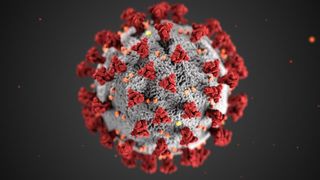
Coronavirus Disease 2019
A Brief Note on Coronavirus Deaths
A simple way to know what's happened.
Posted April 26, 2020

Death focuses the mind but deeply distresses politicians. Especially when their actions can be blamed for unnecessary deaths.
Deaths from COVID-19 already are a political football. Expect the situation to progress with obfuscation, disinformation, and eventually with outright lying taking center stage.
There is a way to cut through the BS: calculating excess deaths.
For any given day, month, or year, a certain number of deaths are expected in any city, county, or country. You witness a generally regular seasonal cycle, which allows hospitals, clinics, and mortuary homes to plan with potent predictability.
You expect national deaths to go up with winter and the infectious diseases that particularly bedevil the north. You don’t expect many skiing accidents in July, but you do see more deaths from boating. Lots of factors change the numbers. And then there’s lockdown.
Lockdowns and Deaths
Lockdowns should really cut the death rate.
This is not immediately obvious, but much of human demise is predicated on normal activity that disappears in lockdowns. About one in 110 Americans die in a car wreck – less when people are told to work at home and not visit relatives. People who might overdose on heroin or designer drugs cannot get to their fix or afford one. Occupational deaths decrease when lots of people don’t make it to closed factories. With less elective surgery, overall deaths also temporarily go down.
If you look at what should happen during lockdown, overall mortality should decline quite a lot.
Excess Deaths
What happens under lockdowns if you see death rates rise? Until proven as a result of cosmic rays or aliens zapping humans, a fine bet is that it’s due to COVID-19.
Are present statistics accounting for this? In some countries, like Belgium, yes. New York City also considers the actual numbers of deaths predicted versus what’s seen. In most places, no. Just like some American politicians wanted the SARS-CoV-2 infection rate kept artificially low, denying researchers the ability to test for weeks and months, lots of government leaders desire a death undercount. The Brits have been among the leaders in this statistical monkeying, generally not counting deaths in nursing homes.
It should be added that beyond the people dying alone in their apartments or suddenly in nursing care, many deaths due to COVID-19 will not be attributed to people diagnosed with the disease. Many will die indirectly, as when heart attack and stroke cases could not be treated effectively because the hospitals they entered were overloaded with COVID-19 patients. Similarly, many future deaths will be indirectly related to COVID-19 due to numerous issues – like parents not getting their kids vaccinated because of closed medical offices.
However, under lockdown, expected deaths should go down. If they go up, that is COVID-19’s doing, until proven otherwise.
If you were wondering, NYC’s death rate is running about 400% higher than expected.
Comparables
Human beings are highly competitive animals. Many Americans worry about bank accounts and gyrating stock portfolios, snazzy cars, whether we have pretty eyes or nails or nicer smiles. We want to know how we stack up.
When I compare the U.S. with Taiwan, whose official statistics declare six deaths in a country of 24 million, or South Korea, where at least 240 have died in a nation of 52 million, lots of people wave their hands. They say no, they’re too (you fill in the blanks – Asian, educated, organized, intelligent, whatever.) I disagree. I think humans around the world are remarkably alike biologically, have similar desires for health and the pursuit of happiness, and two democracies a stone’s throw from the epidemic’s source in China should have been hit much harder than the U.S., which had far more time to prepare.
But still. So let's look for a nation more “comparable.”
Let’s consider Australia. Another British colony that took over a vast landmass whose Indigenous populations were then nearly wiped out, who declared themselves independent of the mother country that fought with it in two World Wars, which created a society marked by a love of freedom and independence. Australia today has a similarly conservative government, angry political division, a mixed capitalist economy with a highly dispersed population, and an insouciant populace that doesn’t like to be told what to do – especially when it comes to not going to the beach.
Here are the numbers so far of deaths per million, according to Worldometer:
Australia – 3
U.S.A – 167
Also of note, Australia’s new COVID-19 cases are now rather rare, while ours are continuing to go up rapidly; many do not believe us to have reached peak rates.
Hopefully, our death rates will decrease dramatically as the summer comes. Statisticians will then be able to better compare excess deaths in the U.S. versus Australia.
Or we can look at the numbers we have now and recognize what they mean about how well we have comparably handled COVID-19.



